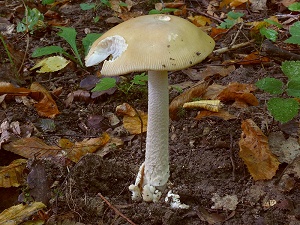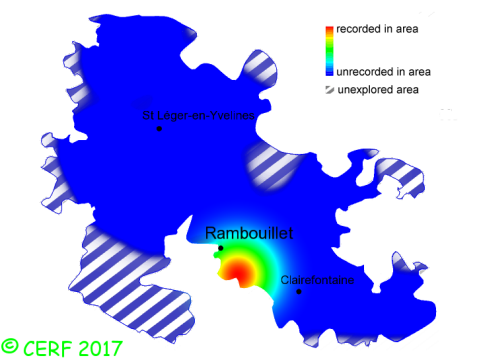| Amanita lividopallescens (Gillet) Gilbert & Kühner |
|
|
|
|
|
|
The cap is ochre, grey; its margin is striate. The cap surface is sometimes with scarse patches of white velar remnants, not viscid nor sticky. The stem is very long, hollow, thick at the base (2-3cm), with a white sheathing volva, without ring. The flesh is unchanging; the odour is faint, unpleasant; its texture is fibrous. The gills are cream to white, free, crowded . The spore print is white. This species is mycorrhizal. It grows on the ground, in broad-leaved woods, ditches, wood edges, clearings, on a rather calcareous soil, with oak, hornbeam. The fruiting period takes place from July to November.
Distinctive features : ochre-grey cap, usually without veil remnants; toothed gills; very long stem with grey to white scaly belts and a sheathing white to ochre volva; on calcareous soil Amanita lividopallescens is rare and confined in the forest of Rambouillet, and is quite rare, more generally speaking . | ||
|
page updated on 14/01/18

